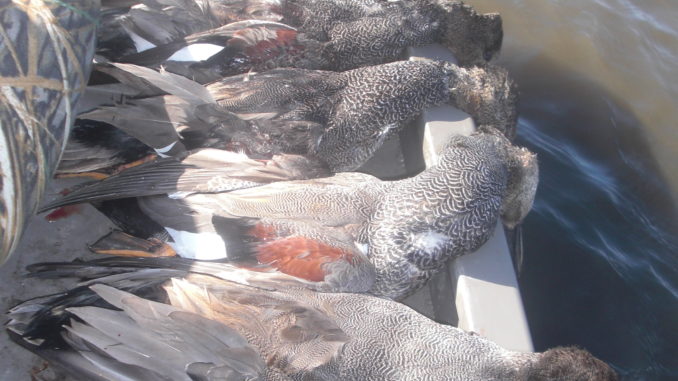
Survey remains above long-term average
The total number of waterfowl counted during South Carolina’s mid-winter survey declined from 2010 but remained significantly above the 10-year average, according to a waterfowl biologist with the S.C. Department of Natural Resources.
Surveys of waterfowl are conducted across the continent for specific population management purposes at various periods each year, according to James Rader, statewide waterfowl coordinator for the S.C. Department of Natural Resources (DNR), based at Donnelley Wildlife Management Area in Colleton County.
“Survey efforts provide estimated numbers of waterfowl for year-to-year trend analysis,” Rader said. “These include a mid-winter survey tabulation of waterfowl by species conducted by cooperating federal, state and private personnel from ground, by watercraft and aircraft on and over traditional wintering habitats. These surveys do not provide total numbers of waterfowl wintering in any state, but do provide numbers from established survey transects during a given year at a point in time. These surveys are subject to various errors that cooperating personnel strive to minimize in order to sustain validity of survey data for comparative purposes.”
The 2011 South Carolina mid-winter survey was conducted Jan. 13-14, according to Rader. The numbers from 2011 are compared to the 2010 mid-winter survey and the 10-year mid-winter survey averages for South Carolina. South Carolina mid-winter survey total waterfowl numbers declined to 140,564 in 2011, from 144,344 in 2010, a 2.6 percent drop, but remained 29.5 percent above the-long term average of 108,552.
South Carolina mid-winter survey dabbling duck numbers increased by 2.3 percent in 2011 to 81,878 from 80,044 in 2010 and remain 45.2 percent higher than the long-term average of 56,400 from 2001-2011. (Dabbling ducks are shallow-water ducks that feed primarily along the surface of the water or by tipping headfirst into the water to graze on aquatic plants and vegetation.) American green-winged teal and gadwall were the top recorded dabblers during the survey.
Mid-winter survey diving duck numbers fluctuate annually due to weather, habitat-related distribution, visibility in survey conditions and other factors. Diving ducks numbers decreased by 24 percent from 37,270 in 2010 to 28,275 in 2011, representing a 5.3 percent decrease from the long-term average of 29,852. These differences are attributable to survey conditions and inconsistent counts of scaup and scoters along the South Carolina coast, which is highly variable from year to year. Ring-necked ducks were the top recorded diver during the survey.
Mid-winter survey goose numbers in South Carolina remain low, at 2,243, but represented an increase of 26.7 percent in 2011 from 1,770 in 2010 and a 6.8 percent increase from the long-term average of 2,100. ”
Overall for 2011,” Rader said, “the number of waterfowl in South Carolina was very similar to 2010, but the distribution observed during the mid-winter survey improved over previous years. Duck concentrations in traditional wintering areas were down, but broader distribution suggests opportunistic use by waterfowl in areas of improving habitat, better suited hydrology conditions at time of survey or reduced hunting pressure.”



Be the first to comment